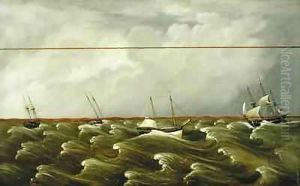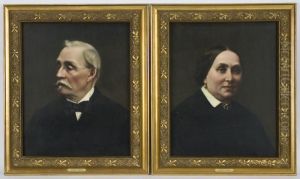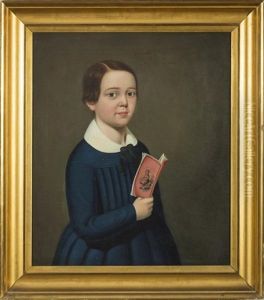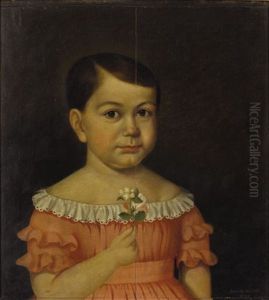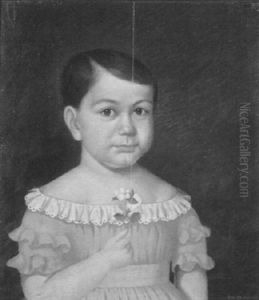William Thompson Bartoll Paintings
William Thompson Bartoll was an American artist, primarily known for his work as a daguerreotypist and miniaturist during the mid-19th century. Born in 1813, Bartoll was a part of the era when the daguerreotype—a pioneering photographic process—was gaining popularity. Although not as widely recognized as some of his contemporaries, his contributions to early American photography and miniature painting were significant during his brief career.
Bartoll's early life is not well-documented, but it is known that he was active in the Boston area, where he worked and lived for most of his life. In the 1840s, he began producing daguerreotypes, which were the first commercially successful form of photography. These images, created on a silvered copper plate, were highly detailed and required a long exposure time. Bartoll was part of the first generation of artists to adopt this new technology, which allowed for precise and enduring portraits, a departure from the more time-consuming and less exact art of miniature painting on ivory.
The artist also engaged in miniature painting, which was a popular art form before the advent of photography. His miniatures were often praised for their delicacy and the skill with which he rendered his subjects. Miniature painting required an extremely steady hand and an ability to work with fine brushes to achieve the minute details. Bartoll's ability to adapt from miniature painting to daguerreotypy suggests he had a keen eye for detail and a dexterity that was well-suited to both media.
Despite his skill, Bartoll did not achieve the same level of fame as some other artists of his time. The reasons are unclear, but it may have been due to the competitive nature of the art market in the 19th century, the rapidly changing technology of photography, or possibly his untimely death. William Thompson Bartoll died in 1854, at the age of 41, which would have limited the breadth of his work and his potential to further develop his craft or reputation.
Unfortunately, there is limited information about Bartoll's life and work, and many of his pieces have likely been lost or remain unidentified. As with many artists of the period, his legacy is pieced together from the works that have survived, census records, city directories, and other archival materials. What remains clear is that William Thompson Bartoll was a talented individual who contributed to the rich tapestry of American art history during a period of significant technological and cultural change.
